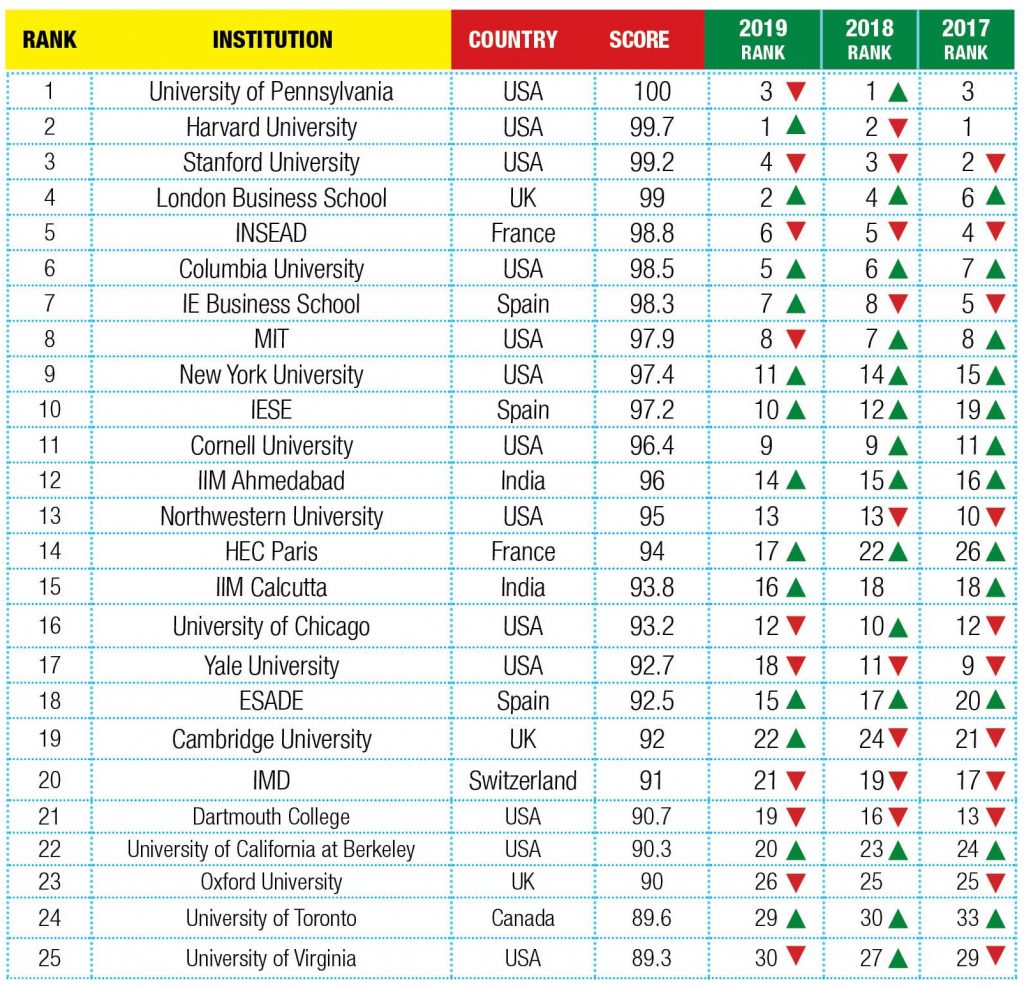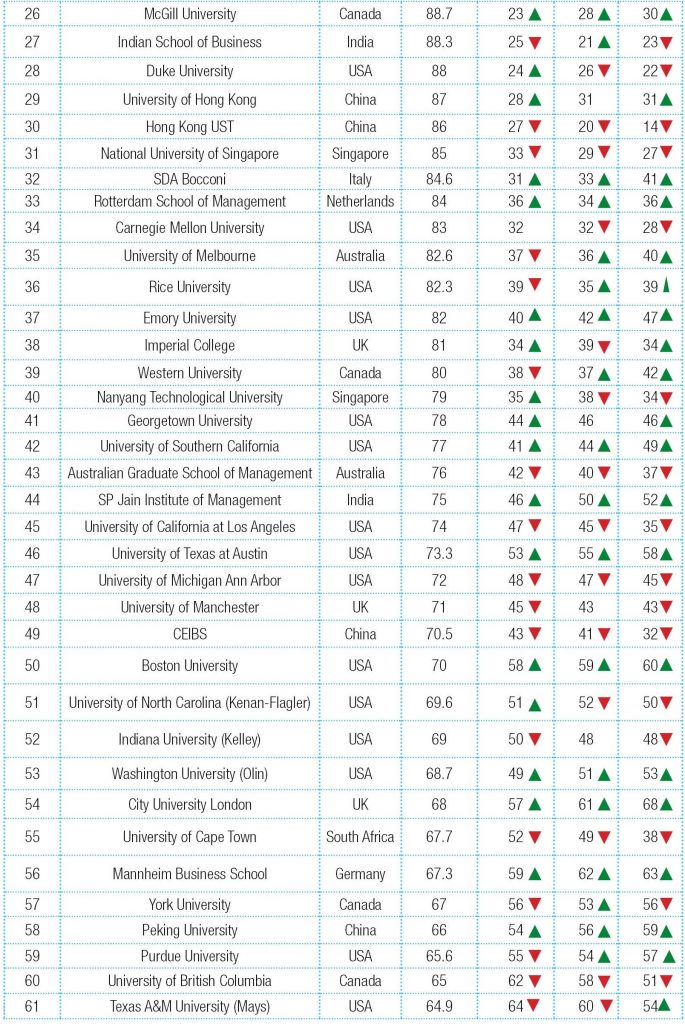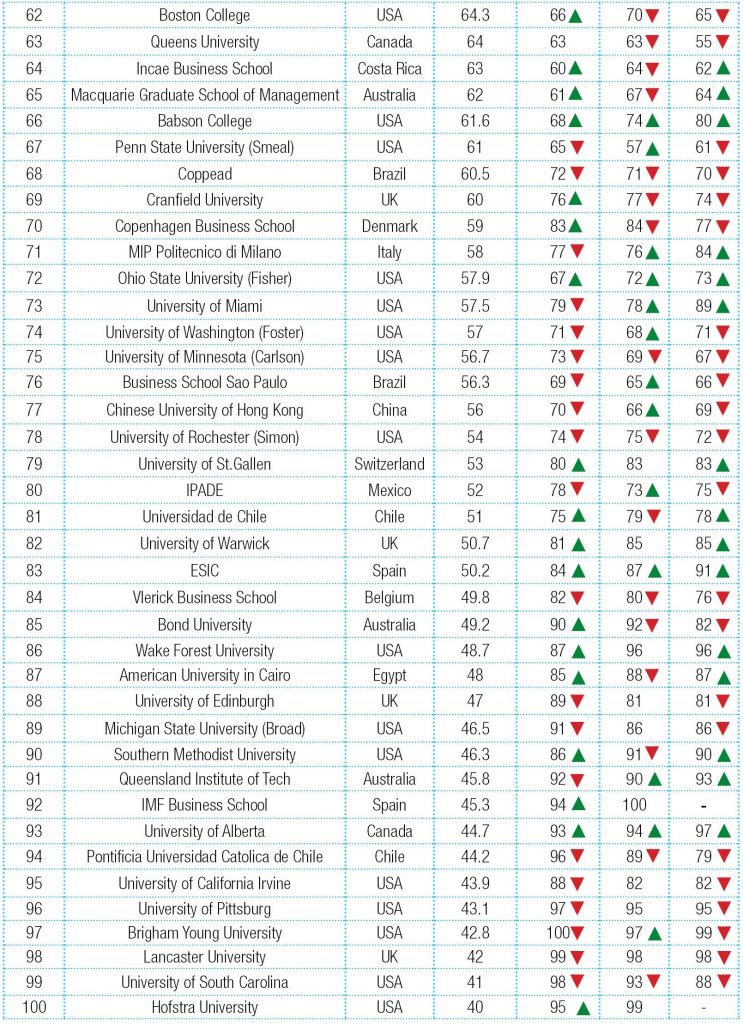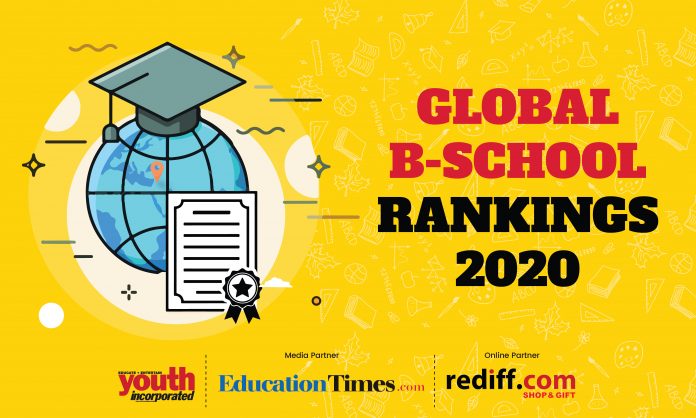With a dream of becoming a 5 trillion dollar economy, India since the past five years has been stressing immensely over the importance of startups and entrepreneurship. To demonstrate the advantages startups and entrepreneurship offers to an individual, the government of India launched various initiatives like Startup India and Make In India. Positively, the government seems to have succeeded in this effort as a majority of youth today are choosing to acquire qualifications that will aid them in self-employment.
This said, Indian individuals today are opting to build a career in either Business, Finance, Marketing, Management or Economics. As a prerequisite to this, more and more individuals are applying to business schools and investing a great amount of effort to successfully pursue a master’s degree. Given this scenario, there undoubtedly exists cut-throat competition among prospective students to get into the topmost business school and secure a seat. To help our readers pick the correct business school for themselves, we at Youth Incorporated have come out with our annual Global B-School Rankings 2020 under which we have compiled the top 100 B-Schools across the globe which are best to graduate from.
Our team connected with 1800 institutes and held discussions with students, recruiters, and the teaching faculty, to present to you the top 100 Global B-School Rankings. We also consulted professional organizations such as AMBA, EQUIS, and AACSB. Youth Incorporated’s Research Unit (YRU) also studied domestic rankings in various countries to find the best institutes.
Owning the tag of the best business school in the world, University of Pennsylvania stands 1st in the rank. Harvard University, making way for University of Pennsylvania slipped one step down to the 2nd position. Stanford University has regained its 3rd position and further pushed London Business School down to the 4th position from its second position in 2019. INSEAD becomes the last of the top 5 global b-schools by ranking 5th. IE Business School maintains its rank of being the 7th in position and continues to remain one of the top 10 business schools in the world along with Columbia University, MIT, New York University and IESE standing at the 6th, 8th, 9th and 10th rank respectively. With this, the USA yet again dominates the top 10 category followed by Spain.
India too has made a little progress this year with three of its institutes making an upward movement. IIM Ahmedabad sits in the 12th position as compared to its 14th position last year. IIM Calcutta has come down by one step holding the 15th rank. The Indian School of Business stands at the 27th position and after moving two steps upwards, the SP Jain Institute of Management is at 44th rank. We still hope to see more Indian business schools on this list in the following years.



Ranking Methodology – Business Schools 2020
How did we choose institutes?
We chose 1800 institutes across the world after having discussions with students, recruiters and faculty. We also consulted professional organizations such as AMBA, EQUIS and AACSB. Youth Incorporated’s Research Unit (YRU) also studied domestic rankings in various countries to find the best institutes.
All the institutes were sent identical surveys. We then contacted current students, alumni as well as local and international recruiters and gathered specific information about the institutes.
Factors considered
- Recruiter Perception – Identical surveys were sent to recruiters worldwide. The recruiters were asked to rate the institutes that they were most likely to recruit from. The recruiters were also asked to rate the students they have recruited from specific business schools on several criteria including leadership potential and strategic thinking.
- Diversity of Students – The institutes were asked to report the total number of students on campus and what percentage of the students were international and speak two or more languages. Gender diversity of the students was also considered.
- Diversity of Faculty – The institutes were asked to report the total number of faculty on campus and what percentage of the faculty was international, hold a doctorate degree and accredited with their own publishing material. Gender diversity of faculty was also considered.
- Innovation of Programs – We considered the different ways to construct degree programs as well as the choice students have in terms of selecting electives.
- Innovation in Teaching Methodologies – Institutes were asked to select different teaching methodologies that we considered innovative. Some of these included company visits, dual or multiple majors and course collaborations between different departments at the institute. Our list was selected after surveying students across different campuses worldwide.
- Value for Money – We considered students and alumni opinions on whether a particular institute was perceived as ‘value for money’. We also asked institutes to state the percentage of students who received some sort of funding from the institutes.
- Campus Support – We asked the institutes, current students and alumni to select the different types of assistance provided by the student office or a similar body on campus. Our list was selected after surveying students across different campuses worldwide.
- Career Service – We asked the institutes, current students and alumni about the availability and functioning of a career service cell and how active such a service was for the students. We also considered what percentage of students were actually placed through the institute’s career service cell, how long it look for such placements and what the average starting salaries were.
- Exchange Programs – Institutes were asked to report the percentage of students that opted for exchange programs. We also considered the exchange students present on the institute’s campus.
- Student Satisfaction – Current students and alumni were asked to rate their institutes on various factors including career services, attitude of staff and professors, location, and course content.
Actual Methodology
Institutes were provided a link using which they could send us their completed survey online. They were asked to answer questions relating to full-time faculty, career service, student and program information and all the factors listed above.
We contacted current students and alumni of the institutes and asked them to rate specific statements which were pertaining to the factors we considered in this ranking. All the institutes preferred to send the survey links to their students and alumni directly.
Over 17000 recruiters were sent emails with a survey. The recruiter list was prepared from the responses of the institutes and also included internationally well-known recruiters. The recruiters were asked to enlist institutes that they were likely to recruit from.
Below is a summary of the factors and the weight-age given to each factor when we ranked the institutes:
| Information reported by the institute | Information reported by current students | Information reported by alumni | |
| Diversity of Students | 2% | 2% | 2% |
| Diversity of Faculty | 2% | 2% | 2% |
| Innovation of Programs | 2% | 2% | 2% |
| Innovation in Teaching Methodologies | 2% | 2% | 2% |
| Value for Money | 2% | 2% | 2% |
| Campus Support | 2% | 2% | 2% |
| Career Service | 4% | 4% | 4% |
| Exchange Programs | 2% | 2% | 2% |
| Student Satisfaction | 2% | 2% | 2% |
| 20% | 20% | 20% |
| Information reported by recruiters | |
| Recall of institute where to recruit from | 10% |
| Likelihood of recruiting from the same institute again | 10% |
| Overall satisfaction with students recruited | 10% |
| Satisfaction with institute career cell | 10% |
| 40% |
Each factor was made up of a set of questions. The total percentage attributed to that factor was based on the average score of the responses multiplied by the assigned weight-age. We then totalled the score from all factors and sorted the scores from highest to lowest. The institute with the highest score was ranked 1st.
Not just numbers!
After we received the total computed scores for the institutes, we subjectively analyzed the data provided by the institutes, current students, alumni and recruiters. If we found discrepancies in the satisfaction scores and the subjective descriptions, we omitted the data.
Institutes that did not fill out the survey reports in time
Out of the institutes that were contacted, 115 institutes did not complete the survey on time or did not respond. We used publicly available information on the institutes to include them in our ranking. We also contacted current students, alumni and recruiters of these institutes and compared the data we received with the data from institutes that did participate.
Special notes
Masters in Finance – The programs include the pre-experience as well as the post-experience Masters programs. The ranking also includes the programs which are recently established.
Masters in Management – Certain Masters of Management programs with specializations are also included in the ranking.
Masters in Marketing – Combination courses of Marketing with communication and other fields are also included in the ranking.
Online MBA – Certain factors such as Campus Support and Exchange Programs were omitted in the factors considered for the ranking.
Executive MBA – Certain factors such as Campus Support and Exchange Programs were omitted in the factors considered for the ranking.
For the above 5 rankings, scores obtained by the institutes were rounded off.






























